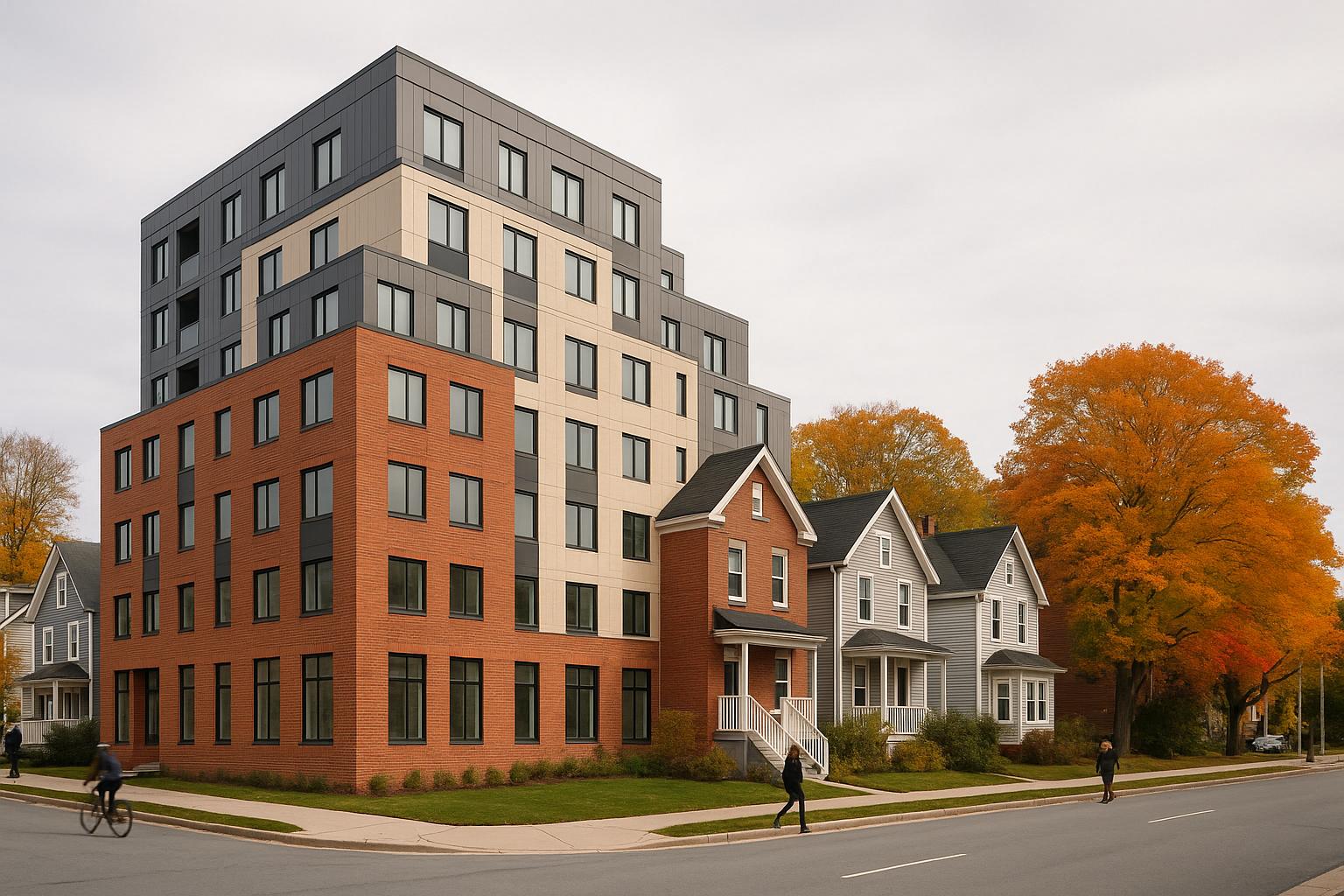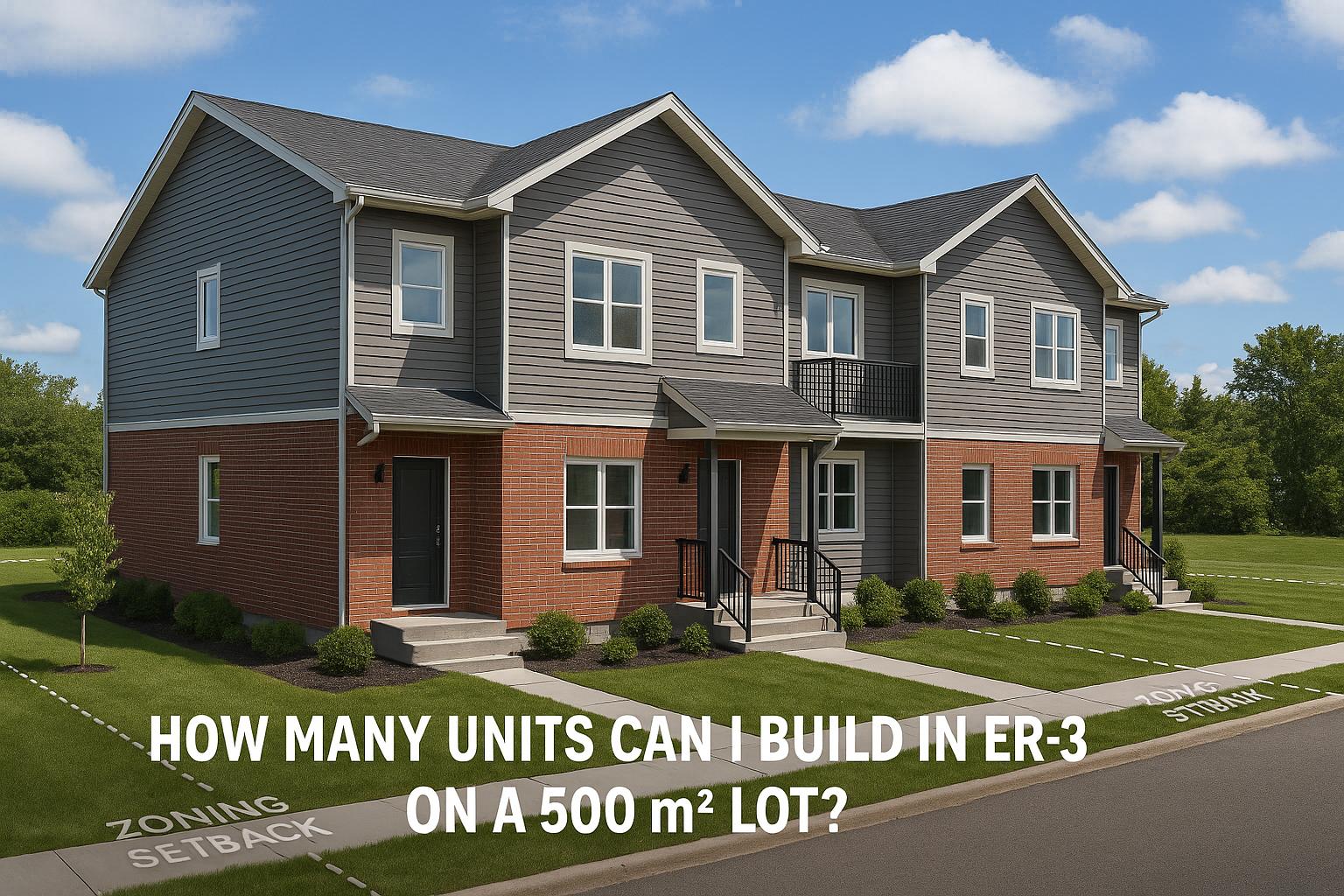Choosing between a basement and a slab foundation for rental properties in Nova Scotia depends on cost, site conditions, and long-term goals. Basements offer extra space for storage or rental units but are more expensive and risk water issues. Slabs are cheaper, faster to build, and easier to maintain but lack additional usable space.
Key Factors to Consider:
- Cost: Basements cost $45–$95 per sq ft, while slabs cost $5–$5.50 per sq ft.
- Site Conditions: Clay, sand, or rocky terrain, as well as water tables, affect suitability.
- Maintenance: Basements may require waterproofing and drainage; slabs need frost protection.
- Rental Potential: Basements can increase income with extra space; slabs prioritize affordability.
Quick Comparison:
| Feature | Basement | Slab |
|---|---|---|
| Cost (per sq ft) | $45–$95 | $5–$5.50 |
| Construction Time | Longer | Shorter |
| Maintenance | Higher (waterproofing, drainage) | Lower (insulation, frost protection) |
| Space | Additional usable space | No extra space |
| Best for | Sites with stable soil, low water | Sites with high water tables, rocky |
Assess your site conditions, budget, and rental goals to make the right choice.
New Home Slab vs Basement Foundation Cost Difference
Foundation Costs: Basements vs Slabs in Nova Scotia
When comparing basement and slab foundations in Nova Scotia, it’s essential to look beyond just the upfront construction costs. Long-term maintenance and the type of construction contract you choose can significantly impact your overall expenses.
Construction Costs: Basements vs Slabs
Slab foundations are typically the more affordable option, costing between $5.00 and $5.50 per square foot. For an average 1,800 ft² building, this adds up to about $9,000 to $9,900. On the other hand, basement foundations are considerably more expensive, ranging from $45 to $95 per square foot, or $81,000 to $171,000 for the same size project - making them approximately 9 to 17 times pricier than slabs [1].
| Foundation Type | Cost Per Sq Ft | 1,800 Sq Ft Building | Key Cost Drivers |
|---|---|---|---|
| Slab-on-Grade | $5.00 - $5.50 | $9,000 - $9,900 | Concrete, site prep, minimal excavation |
| Basement | $45 - $95 | $81,000 - $171,000 | Excavation, waterproofing, drainage, backfill |
While basements demand a much larger initial investment, they offer additional usable space for utilities, storage, or even rental units. This potential for added functionality can offset the higher cost in certain scenarios, especially when calculated on a cost-per-usable-square-foot basis.
Maintenance and Long-Term Costs
Initial costs are just one part of the equation. Long-term maintenance plays a crucial role in determining the overall expense of your foundation. Slab foundations are generally easier and cheaper to maintain over time. In contrast, basement foundations in Nova Scotia’s freeze-thaw climate often require ongoing waterproofing, sump pump upkeep, and crack repairs to prevent water damage. Slabs, however, may need proper insulation to maintain thermal efficiency, especially in colder months.
Fixed-Price vs Cost-Plus Construction
The type of construction contract you choose can also affect your budget and financial predictability. Cost-plus contracts, while flexible, can lead to 30–60% budget overruns due to unexpected site conditions. Fixed-price contracts, such as those offered by Helio Urban Development for $160,000 per unit (including foundation costs), provide a clear and predictable budget. This approach simplifies financing and reduces the stress of unforeseen expenses.
Collaborating with a unified team for design, engineering, and construction from the outset can further minimize surprises. For property owners developing multi-unit rental properties, fixed pricing offers an added layer of certainty, making it easier to secure financing and estimate rental income with confidence.
[1] Source: RAG
Construction Risks and How to Manage Them
Building rental properties in Nova Scotia comes with its share of challenges, particularly when it comes to foundation work. These risks can impact both timelines and budgets, making it essential to understand the potential pitfalls of different foundation types - and how to address them effectively.
Main Risks for Each Foundation Type
Basement foundations in Nova Scotia face unique challenges due to the province's climate and soil conditions. Water infiltration is a major concern, caused by groundwater, surface runoff, or the freeze-thaw cycle. Without proper drainage, hydrostatic pressure can build up, leading to cracks and leaks that are not only costly but also time-consuming to repair. Additionally, deep excavation can uncover unexpected issues like unstable soil, bedrock, or high water tables that might not have been evident during the initial site assessments.
Slab foundations come with their own set of risks. Frost heave is a significant issue, as frost can penetrate as deep as 1.2 to 1.5 metres in Nova Scotia. If the slab isn’t properly insulated or the subgrade isn’t adequately prepared, frost can push sections of the foundation upward, causing cracks and structural problems. Poor drainage under the slab can also lead to settling, resulting in uneven floors. Another challenge with slabs is that accessing utilities later - such as plumbing or electrical systems - can require cutting through the concrete, adding complexity and expense to future repairs.
By understanding these risks, property owners can take proactive steps to reduce potential issues.
How to Reduce Construction Risks
Effective site preparation is the first line of defence against foundation problems. For basement foundations, it’s crucial to install proper drainage systems, including weeping tiles, waterproof membranes, and carefully selected backfill materials. These elements work together to divert water away from foundation walls, ideally connecting to storm sewers or natural drainage points.
For slab foundations, frost protection is key. Installing insulation around the perimeter and beneath the slab helps prevent frost from penetrating and causing damage. Properly compacting the subgrade and adding a vapour barrier are also essential steps to prevent moisture issues and settling.
Soil testing is another critical step that can save a lot of money and stress down the line. Spending $2,000 to $5,000 on soil analysis upfront can help identify hidden problems like poor drainage or unstable ground, which could otherwise lead to tens of thousands of dollars in unexpected costs during construction.
Quality control during the build is equally important. Having a Professional Engineer (P.Eng) inspect the foundation work at key stages ensures that waterproofing, drainage, and structural elements meet required standards. This extra layer of oversight helps catch issues early, avoiding costly repairs or delays after the project is completed.
Single Team vs Multiple Contractors
How a project is managed can make a significant difference in mitigating risks. The traditional approach of hiring separate contractors for excavation, concrete, waterproofing, and drainage often leads to coordination problems. When something goes wrong - like a waterproofing failure - figuring out who’s responsible can become a frustrating game of finger-pointing. Repairs often fall through the cracks, adding delays and costs.
An integrated construction team offers a more streamlined solution. When one company handles everything from design to construction, accountability is clear. Issues are resolved quickly, without the blame game, and timelines stay on track because all trades are working together under one plan.
Fragmented schedules with multiple contractors often extend foundation work to 12–18 months. In contrast, an integrated team can reduce this timeline to about six months by coordinating tasks more efficiently. This approach ensures that critical components like waterproofing, drainage, and backfill are completed in sync, avoiding costly delays and giving property owners the confidence to move forward with financing and rental planning.
sbb-itb-16b8a48
Site Conditions: Which Foundation Works Best
Picking between a basement and a slab foundation isn't just about the price tag - it’s about finding the right match for your property’s specific conditions. Nova Scotia’s landscape is incredibly diverse, ranging from clay-heavy soils to rocky coastlines. This means that a foundation type that works perfectly in one area could cause headaches in another.
By considering both costs and potential risks, it’s clear that aligning your foundation choice with your site’s unique features is key to ensuring long-term durability.
Soil, Drainage, and Water Table Factors
Clay soils, found in areas like the Halifax Regional Municipality and the Annapolis Valley, are notorious for their movement. When wet, they expand; when dry, they shrink. This constant shifting can strain foundations. For basements in clay-heavy regions, it’s critical to invest in strong drainage systems and flexible waterproofing membranes designed to handle this movement. While clay’s low permeability can help stabilize water tables, proper design is essential.
Sandy soils, common in places like Lunenburg County and parts of Cape Breton, drain well but can shift over time. Basements in sandy areas generally face fewer water challenges, but compacting the backfill properly is a must. Slab foundations often shine in sandy conditions since natural drainage reduces the risk of frost heave and hydrostatic pressure.
Rocky terrain in Nova Scotia’s interior presents another set of challenges. Excavating for a basement may require blasting, which can drive up costs significantly. In such cases, a slab foundation often becomes the more economical option. However, rocky ground provides excellent bearing capacity and natural drainage, making a basement a stable choice if excavation is manageable.
High water tables near coastal areas or wetlands can complicate basement construction. In these locations, extensive waterproofing and moisture management are often needed, which can add to the cost. A well-graded slab foundation, on the other hand, might be a more practical and reliable solution, especially when dealing with consistent moisture levels.
Frost Depth and Climate Effects
Nova Scotia’s deep frost penetration has a big impact on foundation design. Basements are typically built below the frost line to avoid frost heave, but they still need properly insulated exterior walls and drainage systems. Slab foundations, being closer to the surface, rely on robust perimeter insulation and high-quality concrete to resist freeze–thaw cycles.
While basements benefit from the insulating effect of surrounding soil, slabs excel when constructed with durable concrete and proper curing techniques to withstand surface weathering.
Soil Testing and Site Assessment
Getting a professional soil test done is a critical step when deciding on a foundation. Skipping this step can lead to expensive problems later on.
Geotechnical evaluations, which might include soil boring, drainage tests, and load-bearing analysis, provide a detailed look at soil composition, seasonal groundwater changes, and the site’s overall stability. For basements, these evaluations can uncover potential challenges like expansive clay layers or shallow bedrock, which could affect excavation methods and costs.
Percolation testing measures how quickly water drains through the soil. Poor drainage can complicate basement waterproofing, while overly fast drainage might require extra preparation for a stable slab. Monitoring the water table across different seasons - from spring thaw to late summer - can also reveal moisture issues that a single test might miss.
Here’s a quick guide to foundation choices based on common site conditions in Nova Scotia:
| Site Condition | Best Foundation Choice | Key Considerations |
|---|---|---|
| Clay soil with moderate drainage | Basement with enhanced waterproofing | Use flexible waterproofing systems and strong drainage solutions |
| Sandy soil with good drainage | Either option works well | A slab may save on costs, but a basement adds extra space |
| Rocky terrain with high excavation costs | Slab foundation | Avoid the extra expense of blasting during excavation |
| High water table areas | Slab with proper grading | Basement waterproofing could require significant additional measures |
| Steep slopes with good drainage | Basement foundation | Take advantage of natural site conditions for added stability |
| Flat lots with poor drainage | Slab with enhanced site preparation | Proper preparation can improve water flow management |
Taking the time to assess your site thoroughly can save both time and money. With accurate soil data, you can lock in precise quotes and realistic project timelines, cutting down on surprises and delays during construction.
Maximizing Rental Returns: Basement vs Slab ROI
The type of foundation you choose can significantly influence your rental returns. It impacts how you utilize space, the speed of construction, and your overall income potential. To make the best decision, consider your market conditions and financial goals while keeping in mind earlier discussions about costs and construction risks.
Basements: More Space, Higher Rent Potential
A finished basement adds valuable living or storage space, making your property more attractive to tenants. Whether it’s families needing extra storage or young professionals looking for flexible living arrangements, this added versatility can justify higher rent. Plus, the additional space often helps reduce vacancy periods, ensuring a more consistent income stream.
Slabs: Cost-Effective and Quick to Build
Slab foundations are known for their simplicity and lower construction costs. Since they don’t require extensive excavation or finishing, the build process is quicker, allowing you to start generating rental income sooner. This can be a great option if your priority is minimizing upfront costs and accelerating your timeline.
Faster Construction with Predictable Timelines
Delays in construction often mean delayed rental income. However, using an integrated construction approach - where design, engineering, and building teams collaborate from the outset - can help avoid these setbacks. With fixed schedules, financial penalties for delays, and tools like daily photo updates and real-time tracking, you can streamline marketing and leasing efforts. This approach ties back to earlier discussions about managing construction risks effectively.
Both basements and slabs have their own merits. The key is to align your choice with your property’s unique site conditions and your broader investment goals.
Key Points for Nova Scotia Property Owners
When deciding on a foundation type, it’s important to weigh your financial goals against the specific conditions of your property. For example, if your site has stable soil and good drainage, a basement could provide extra living space that might increase rental income. On the other hand, if your property faces high water tables or problematic soil, a slab foundation could help you sidestep expensive issues later.
The cost difference between basements and slab foundations is another critical factor. Generally, basements are more expensive to build, but they can yield higher rental rates and shorter vacancy periods, potentially making the extra investment worthwhile. Slab foundations, however, are typically quicker to construct, allowing you to start generating rental income sooner and improving your cash flow. This highlights the need to match your foundation choice with both market conditions and the property’s physical characteristics.
Delays and budget overruns are common in construction projects, often caused by fragmented project management. These issues can inflate costs by 30–60% and stretch an eight-month project to as long as 18 months. Opting for integrated, fixed-price construction can help you avoid these pitfalls, providing a more predictable timeline and budget.
A professional geotechnical evaluation is another step that should not be overlooked. By thoroughly assessing the site, you can make an informed foundation choice and potentially avoid costly repairs down the line.
Lastly, consider the preferences of your target rental market. Properties with finished basements may appeal to families needing extra space for storage or living, while slab-foundation homes often attract tenants seeking low-maintenance living. Both options can generate strong returns when matched to the right tenant demographic. By combining these insights with earlier cost and risk considerations, you can tailor your foundation decision to meet market demands and start marketing your property sooner.
FAQs
How do Nova Scotia's site conditions affect the decision between a basement and a slab foundation?
Site conditions in Nova Scotia heavily influence whether a basement or slab foundation is the better choice. With frost depths reaching as much as 1.2 metres (4 feet), footings must be placed below this level to avoid frost heave, which can cause cracks in the structure. The type of soil is just as important - clay-rich soils, common in parts of the province, hold moisture and expand when frozen, putting significant pressure on below-grade walls.
Nova Scotia’s climate also brings heavy rainfall and snowmelt, making proper drainage a must. Without efficient water management, moisture can gradually weaken the foundation. For properties in areas with poor drainage or problematic soil, it’s essential to assess these factors thoroughly to ensure the foundation is suited to the site’s unique conditions.
What should I consider for maintaining basements versus slab foundations in Nova Scotia's climate?
In Nova Scotia, the unique climate brings specific challenges when it comes to maintaining basements and slab foundations. Basements, for instance, often face moisture-related issues. Without proper waterproofing and drainage systems, problems like water damage or mould can arise. Keeping the space well-ventilated and addressing cracks as soon as they appear are crucial steps to avoid more serious, long-term damage.
Slab foundations, meanwhile, have their own vulnerabilities, especially during the colder months. If not properly insulated, they can fall victim to frost heave, which may lead to cracking or even structural problems. To tackle these risks, thorough site preparation is essential. This includes ensuring proper insulation and installing effective drainage systems. Using durable materials and hiring experienced professionals for installation can make a big difference in reducing the upkeep needed for both types of foundations.
What can Nova Scotia property owners do to reduce risks when building with basement or slab foundations?
When it comes to reducing risks for basement or slab foundations in Nova Scotia, the key is starting with solid site preparation. For slab foundations, begin by clearing the area of vegetation, compacting the soil, and adding insulation along the edges and underneath. This insulation helps prevent frost heave, a common issue in colder climates. Reinforcing the concrete with steel and incorporating control joints can also go a long way in reducing the likelihood of cracks.
Water management is equally important for both foundation types. Make sure the ground slopes away from the foundation to direct water away, and address any cracks or leaks as soon as they appear. If you're dealing with a basement and suspect structural problems, it’s wise to bring in a professional for an evaluation. These proactive measures can help safeguard your foundation and contribute to its durability over the long term.



